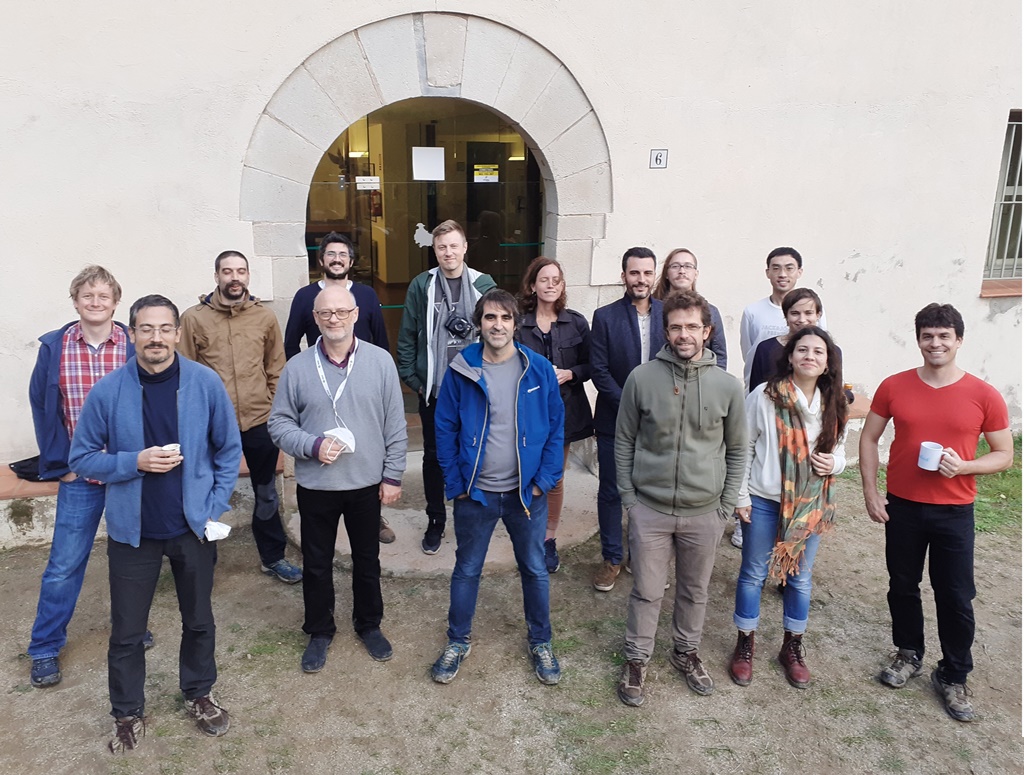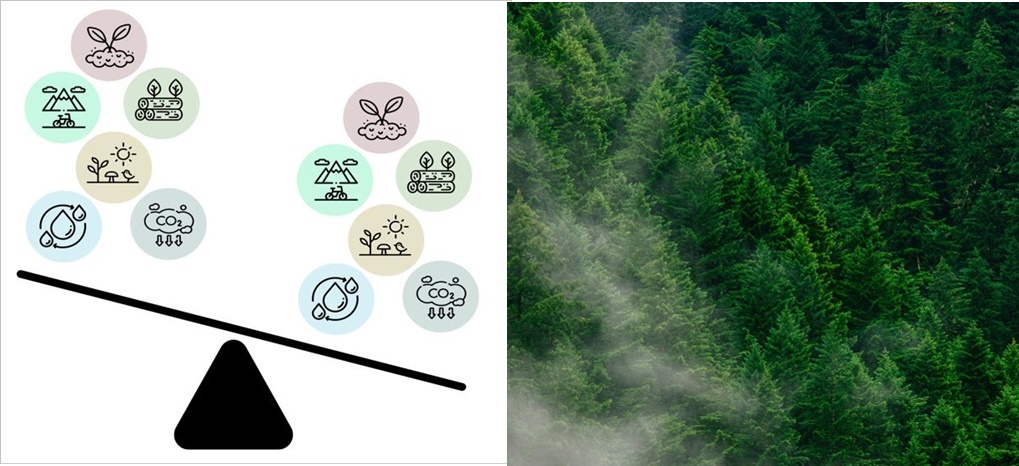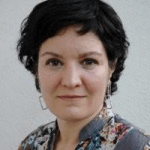Synthesis Actions, an opportunity for international scientific cooperation
Collaboration and exchange of scientific knowledge at national and international level is the common thread of the Synthesis Actions, coordinated by CREAF researcher Maurizio Mencuccini. This initiative fosters innovative, interdisciplinary and wide-ranging collaborations between CREAF's researchers and international groups through workshops and reviews, both face-to-face and remotely. It brings together interdisciplinary research specialists to share, discuss and advance cutting-edge ecological issues. As in competitive calls, the proposals submitted by CREAF's scientific team are previously evaluated. CREAF has launched a total of three calls for Synthesis Actions, two of which are ongoing. The most recent one has been resolved in July 2022 and the two previous ones were resolved in May and January 2021 respectively.
The Synthesis Actions foster innovative, interdisciplinary and wide-ranging collaborations between CREAF's research team and international groups on cutting-edge ecological issues.
The first call is 'Meeting the Potential of SAPFLUXNET to Ground-Truth Tree Water Use and Drought Responses in Models and Remote Sensing Products at Regional to Global Scales', of which a workshop was held in Can Balasc (Collserola, Barcelona) in November 2021. It was coordinated by CREAF researcher Rafael Poyatos and organised by also CREAF researchers Brenda Fatecha, Jordi Martínez-Vilalta, Miquel de Cáceres, Victor Flo and Víctor Granda. The researcher responsible for Synthesis Actions at CREAF, Maurizio Mencuccini, took an active part in the workshop.
The meeting brought together specialists in forest ecology, bio-meteorology and earth science to explore new ways of using SAPFLUXNET, the global database on tree water use from sap flow measurements. SAPFLUXNET is coordinated by CREAF and aims to improve understanding of tree water use regulation and responses to drought at regional and global scales. "The Synthesis Action has consolidated the internationalisation of the project and promoted new synthesis activities," said Rafael Poyatos, Sapfluxnet project leader. "It has allowed us to bring together a heterogeneous group of people, leaders in forest ecology and earth science research, to discuss the present and future of the project.

Tree resilience
One of the key proposals shared in this first Synthesis Action was to develop a roadmap on how to estimate tree water use resilience from sap flow time series, and how to understand tree response to individual drought events using this concept. The intention is to apply this framework to the entire SAPFLUXNET database, to identify environmental conditions and species traits that control tree recovery to drought around the world.
Among other conclusions, it became clear that SAPFLUXNET is a very useful tool for the community and that it has room to grow and evolve into a decentralised network, to share and standardise data processing methodologies and protocols.
Speakers included Kimberly Novick, Indiana University (USA); Alexandra Konings, Stanford University (USA); Diego Miralles, Ghent University (Belgium); Jacob Nelson, Max-Planck Institute (Germany); Mirco Migliavacca, European Commission, Joint Research Centre (EU) and Samuli Junttila, University of Eastern Finland (Finland), to mention a few of them.
Forests and ecosystem services
The second call has funded the proposal 'Assessing and comparing ecosystem services among forests is key, but why and how? (FES)', which seeks to answer why it is essential to assess ecosystem services between forests, and how to compare them between different forest types. The proposal is driven by the scientific team formed by Victor Flo (Imperial College, UAB), María Ángeles Pérez-Navarro (Kings College London), Judit Lecina-Díaz (Technical University of Munich), Jose Valentín Roces-Díaz (University of Oviedo), Luciana Jaime (CREAF), Albert Vilà (CREAF, Stirling University). And a workshop is planned for November 2022 with the CREAF specialists in this field Javier Retana, Josep M. Espelta, Francisco Lloret, Jordi Martinez-Vilalta and Maurizio Mencuccini, as well as organisations from Canada, Brazil, the United Kingdom, Germany, the Netherlands and Italy, to address related aspects such as socio-ecological systems, forest conservation and environmental policies, among others.

The second Synthesis Actions proposal seeks to answer why it is essential to assess the ecosystem services provided by forests and how to compare them between different forest types.
The approach of this second workshop is based on the services and benefits to society provided by forests as multifunctional ecosystems. These benefits (ecosystem services) and the level of provision they provide vary due to the different structure, composition and functioning of each forest type. Therefore, forests located in regions with humid climates will generally have higher growth - or carbon sequestration - rates than those growing in drier regions. "However, we understand that this does not imply that the former are necessarily more important for society," says José Valentín Roces, one of the promoters of this second action.
Three proposals for the third call
In the third call for proposals, it has been decided to fund the three proposals received, which are in their earliest stage, as they have been finalised in July 2022.
- Mediterranean spring ecosystems: hotspots of biodiversity threatened by global change, initiative of CREAF researchers Marcos Fernández-Martínez and Estela Romero.
- Natural Capital assessment of mountain regions, presented by CREAF pre-doctoral researchers Anna Zango, Anaïs Jolivet, and CREAF researchers Bernat Claramunt and Joan Pino, who is also director of the centre.
- Evaluating maladaptation of forest tree populations in a context of climate change: from multidisciplinary science to practice and action (For Change), proposal by CREAF researchers José Alberto Ramírez-Valiente, Maria Mayol, Miquel Riba and Juan José Robledo-Arnuncio.
Synthesis Actions are inspired by similar international initiatives, such as the International Synthesis Consortium (ISC), a global network of centres with long-standing experience and proven success in developing synthesis actions to solve complex scientific problems.
This action is part of the Severo Ochoa “ULandscape” funded in 2019 by the Agencia Estatal de Investigación of the Spanish Ministry of Science and Innovation to support Research Centres of Excellence.








